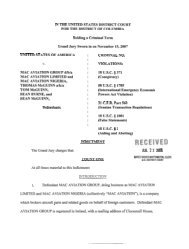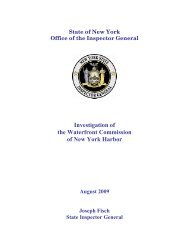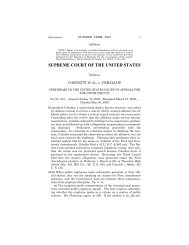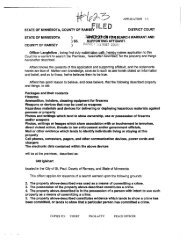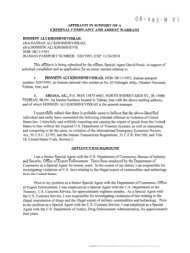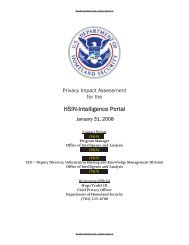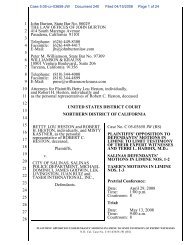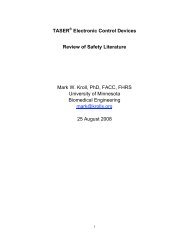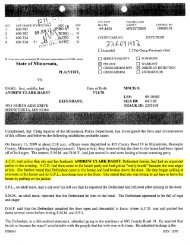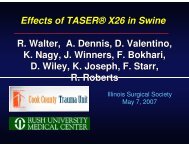- Page 1 and 2: 11234567891011121314151617181920212
- Page 3 and 4: 31I N D E X2EXAMINATION BYPAGE3Mr.
- Page 5 and 6: 51234567891011121314151617181920212
- Page 7 and 8: 71234567891011121314the Rosa case.T
- Page 9 and 10: 91234567891011121314151617181920212
- Page 11 and 12: 11123456789101112131415161718192021
- Page 13 and 14: 13123456789101112131415161718192021
- Page 15 and 16: 15123456789101112131415161718192021
- Page 17 and 18: 17123456789101112131415161718192021
- Page 19 and 20: 19123456789101112131415161718192021
- Page 21 and 22: 211it.23456789101112131415161718192
- Page 23 and 24: 23123456789101112131415161718192021
- Page 25 and 26: 25123456789101112131415161718192021
- Page 27 and 28: 27123456789101112131415161718192021
- Page 29 and 30: 29123456789101112131415161718192021
- Page 31: 31123456789101112131415161718192021
- Page 35 and 36: 35123456789101112131415161718192021
- Page 37 and 38: 37123456789101112131415161718192021
- Page 39 and 40: 39123456789101112131415161718192021
- Page 41 and 42: 41123456789101112131415161718192021
- Page 43 and 44: 43123456789101112131415161718192021
- Page 45 and 46: 45123456789101112131415161718192021
- Page 47 and 48: 47123456789101112131415161718192021
- Page 49 and 50: 49123456789101112131415161718192021
- Page 51 and 52: 51123456789101112131415161718192021
- Page 53 and 54: 53123456789101112131415161718192021
- Page 55 and 56: 55123456789101112131415161718192021
- Page 57 and 58: 57123456789101112131415161718192021
- Page 59 and 60: 59123456789101112131415161718192021
- Page 61 and 62: 61123456789101112131415161718192021
- Page 63 and 64: 63123456789101112131415161718192021
- Page 65 and 66: 65123456789101112131415161718192021
- Page 67 and 68: 671234A. That's certainly one conce
- Page 69 and 70: 69123456789101112131415161718192021
- Page 71 and 72: 71123456789101112131415161718192021
- Page 73 and 74: 73123456789101112131415161718192021
- Page 75 and 76: 75123456789101112131415161718192021
- Page 77 and 78: 77123456789101112131415161718192021
- Page 79 and 80: 79123456789101112131415161718192021
- Page 81 and 82: 81123456789101112131415161718192021
- Page 83 and 84:
83123456789101112131415161718192021
- Page 85 and 86:
85123456789101112131415161718192021
- Page 87 and 88:
87123456789101112131415161718192021
- Page 89 and 90:
89123456789101112131415161718192021
- Page 91 and 92:
91123456789101112131415161718192021
- Page 93 and 94:
93123456789101112131415161718192021
- Page 95 and 96:
95123456789101112131415161718192021
- Page 97 and 98:
97123456789101112131415161718192021
- Page 99 and 100:
991that?234567891011121314151617181
- Page 101 and 102:
10112345678910111213141516171819202
- Page 103 and 104:
10312345678910111213141516171819202
- Page 105 and 106:
10512345678910111213141516171819202
- Page 107 and 108:
10712345678910111213141516171819202
- Page 109 and 110:
10912345678910111213141516171819202
- Page 111 and 112:
11112345678910111213141516171819202
- Page 113 and 114:
11312345678910111213141516171819202
- Page 115 and 116:
11512345678910111213141516171819202
- Page 117 and 118:
11712345678910111213141516171819202
- Page 119 and 120:
11912345678910111213141516171819202
- Page 121 and 122:
12112345678910111213141516171819202
- Page 123 and 124:
12312345678910111213141516171819202
- Page 125 and 126:
12512345678910111213141516171819202
- Page 127 and 128:
12712345678910111213141516171819202
- Page 129 and 130:
12912345678910111213141516171819202
- Page 131 and 132:
13112345678910111213141516171819202
- Page 133 and 134:
13312345678910111213141516171819202
- Page 135 and 136:
13512345678910111213141516171819202
- Page 137 and 138:
13712345678910111213141516171819202
- Page 139 and 140:
13912345678910111213141516171819202
- Page 141 and 142:
14112345678910111213141516171819202
- Page 143 and 144:
14312345678910111213141516171819202
- Page 145 and 146:
14512345678910111213141516171819202
- Page 147 and 148:
14712345678910111213141516171819202
- Page 149 and 150:
14912345678910111213141516171819202
- Page 151 and 152:
15112345678910111213141516171819202
- Page 153 and 154:
15312345678910111213141516171819202
- Page 155 and 156:
1551happen.234567891011121314151617
- Page 157 and 158:
15712345678910111213141516171819202
- Page 159 and 160:
15912345678910111213141516171819202
- Page 161 and 162:
16112345678910111213141516171819202
- Page 163 and 164:
16312345678910111213141516171819202
- Page 165 and 166:
16512345678910111213141516171819202
- Page 167 and 168:
16712345678910111213141516171819202
- Page 169 and 170:
16912345678910111213141516171819202
- Page 171 and 172:
17112345678910111213141516171819202
- Page 173 and 174:
17312345678910111213141516171819202
- Page 175 and 176:
17512345678910111213141516171819202
- Page 177 and 178:
17712345678910111213141516171819202
- Page 179 and 180:
17912345678910111213MR. BURTON: Why



